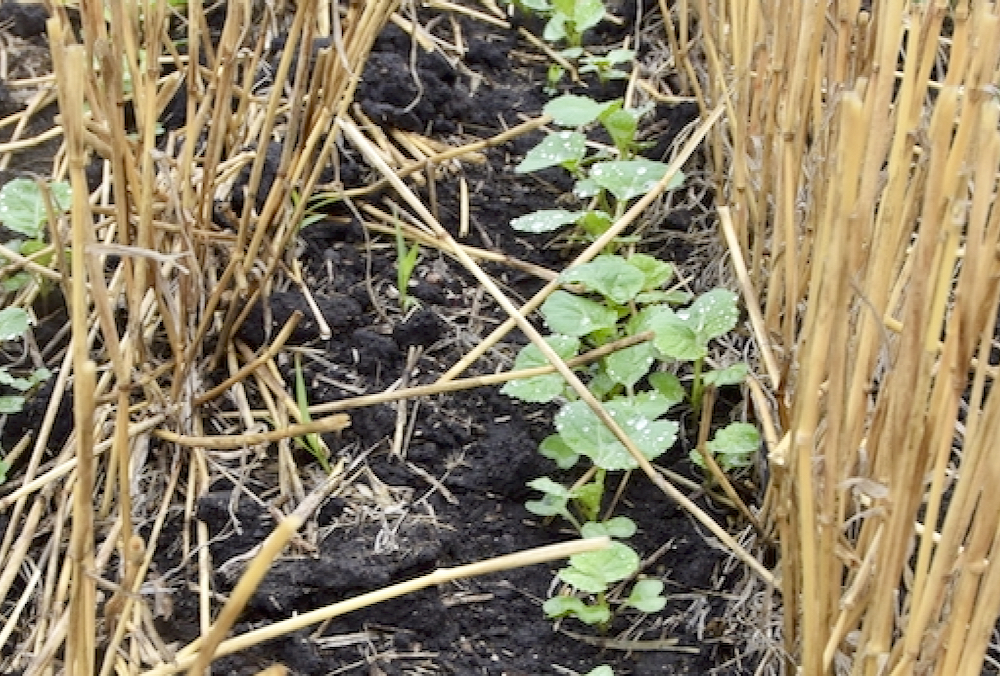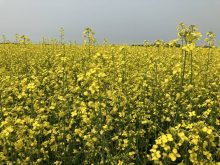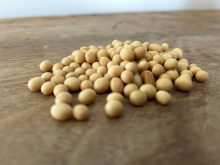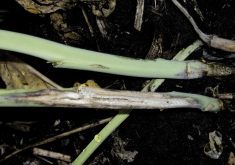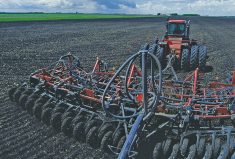The canola industry has a big goal — boost long-term average yields by six bushels an acre by 2025 in order to keep up with demand from crushers.
That’s not a goal that can be achieved, however, if one out of every two seeds coming out of the seeder fails to germinate. Rather, seed survival rates will need to jump to 75 per cent from the current 50 per cent.
And that’s not a big reach — there are already farmers surpassing 80 per cent, said Jason Casselman of the Canola Council of Canada.
Read Also

Hail research hopes to benefit potato growers
Alberta research scientist measures hail storm and heat dome affects on potato crops
“We know what we’ve got to do — it’s those regular agronomic best practices together that make the difference,” said the Fairview-based agronomy specialist.
“There are so many things that affect each other. If I drive too fast and I have worn openers, I’ve got my fertilizer mixing with my seed and now I’ve got a poor stand. So now I’m going to put on brand new openers. What if I still drive too fast and seed too deep — did I actually improve things?
“You have to do better on all of those things all the time.”
Right time, right depth
Probably the first step in achieving a higher seed survival rate is knowing when to plant. Producers don’t always have a choice when it comes to weather and soil conditions, but as a general rule Casselman recommends planting into warm, moist soil in mid-May.
There’s a movement in the wheat world to use soil temperature as a gauge and to seed ‘ultra early’ despite the risk of a spring frost. But that’s not something you want to do with canola, he said.
“The growing point for the wheat plant is below ground so if it gets a frost after emergence it might get a few leaves banged up,” he said. “But that growing point is still protected below ground and it will just continue to make new leaves.
“But in the canola plant that growing point is above ground and it’s where the new growth comes from. The frost comes and that gets killed off and then it can’t recover — it’s done.”
Seeding depth is also critical — for canola, that’s almost always a half-inch to three-quarters of an inch.
“When you achieve that perfect seed depth where you’ve got some moisture and some soil firmly packed around the seed, that initial germination is going to be a lot better than if the seed is either buried too deep or it’s on top of the soil where we’re not getting that good seed-to-soil contact.”
Too deep is never a good thing. So while the temptation in a dry year is to go deeper to reach moisture, Casselman warns against this.
“If it’s dry and that seed is put down too deep it’s going to have an even tougher time getting out of the ground.”
Be especially cautious when it comes to seed-placed fertilizer, he added.
Generally, you don’t want any nitrogen, potassium or sulphur fertilizer in the seed row. A very limited amount of phosphorus (20 pounds per acre maximum) is acceptable.
“Anything that is over and above that is potentially going to cause some problems, especially when we are limited on moisture in the soil profile.”
And waiting too long to replace openers is a big no-no.
“With worn openers we lose that precision placement,” said Casselman. “If we’re not getting that seedbed built with that opener properly, we’re going to introduce variability into the seed row.
“What happens with variability is some seeds will be in the right place and will germinate and grow and continue on but we might have seeds that are going to fall into the fertilizer trench. Or they’re going to be sitting on top of or buried too deep in the soil because they’ve been bounced or moved around due to worn openers.
“Putting the seed where you want it and keeping it there is very important.”
The you factor
And then there’s what may be the biggest factor of all — curbing your desire to get that field seeded.
Although there were many things that contributed to his 85 per cent seed retention last season, Leonard Wurz credits moderate travel speed as a large part of his seeding success. The farm manager of Birch Meadows Colony near Eaglesham kept seeding speeds to around 3.8 to 4.0 m.p.h.
“You can have the best equipment but if you’re going too fast you’re wasting your time,” said Wurz. “You have to have a nice seedbed.”
Still, hitting that sweet spot for seeding speed is an ongoing challenge for many producers.
“If we’re going too fast, the precision placement of that seeding tool is going to be lost because we’ve got vibration, we’ve got soil flowing and we’ve got crop residue that’s being put in play,” said Casselman.
“If we’ve got any variation in any of those factors then we can start to see our plant germination percentage going down.”
Keeping in mind that the “right” seeding speed is highly dependent on the equipment being used, Casselman has some general advice when seeding canola.
“For the average opener I would recommend trying somewhere in that 3-1/2- to 4.0-m.p.h. range. If you feel (the seeding tool) is doing a good job you may want to go a little bit faster. Try 4-1/2 m.p.h. and see what the performance is like. It might be an opportunity for growers to test the limits of their equipment and how they feel about its performance.”
Those limits can be key.
A disc-type opener, for instance, typically allows for somewhat faster speed because they don’t move around as much soil as some other ground tools. Soil conditions, however, will likely have a say on seeding speed.
“Coming into the spring, if we have fairly dry, hard soil and are getting a lot of vibration on that equipment we may have to move a little bit slower. If we get some moisture at the right time and the soil is loose or there’s good soil tilth we might be able to go a little bit quicker.
“I’m not saying we have to be super-slow but we have to be slow enough to do it right. We only get one chance to seed that crop. If we’re running out of time and trying to rush things, that’s where mistakes can happen.”


